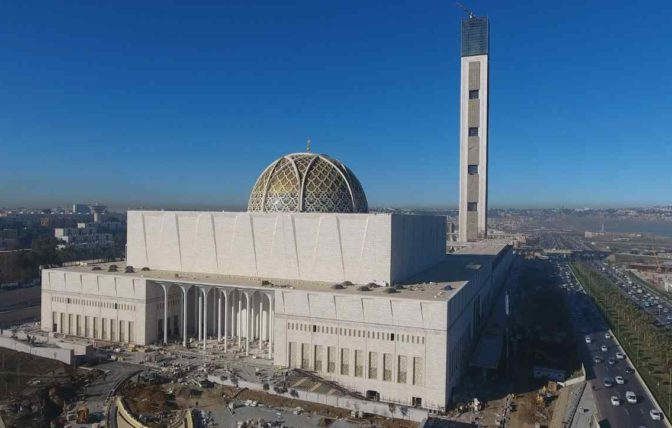
 "
"

 "
"

The Great Mosque of Algiers, also known as the Bouteflika Mosque, is a much-discussed landmark, a political initiative, and advanced architectural design all at once, flanked by the tallest tower on African continent.
On October 28, 2020—the Muslim festival known as Mawlid an-Nabi (Feast of the Birth of Muhammad)—the Grand Mosque of Algiers’ Prayer Hall, which has a capacity for up to 120,000 people, was consecrated and made publicly accessible for the first time.
The mosque is known as the Bouteflika Mosque because the former president of Algeria, Abdelaziz Bouteflika, who was forced to resign after 20 years in April 2019 by street protests, had a strong desire for the monumental complex as a kind of architectural concretization of the political project of opening up to moderate religiosity as well as a monument to himself. Numerous critics of the mosque’s pharaonic proposal have noted that the country’s health care system is gravely out of date and that this is sadly relevant today.
The city already has hundreds of neighborhood mosques. Taxpayers in Algeria paid more than 750 million euros for it, money that could have been used in other ways.